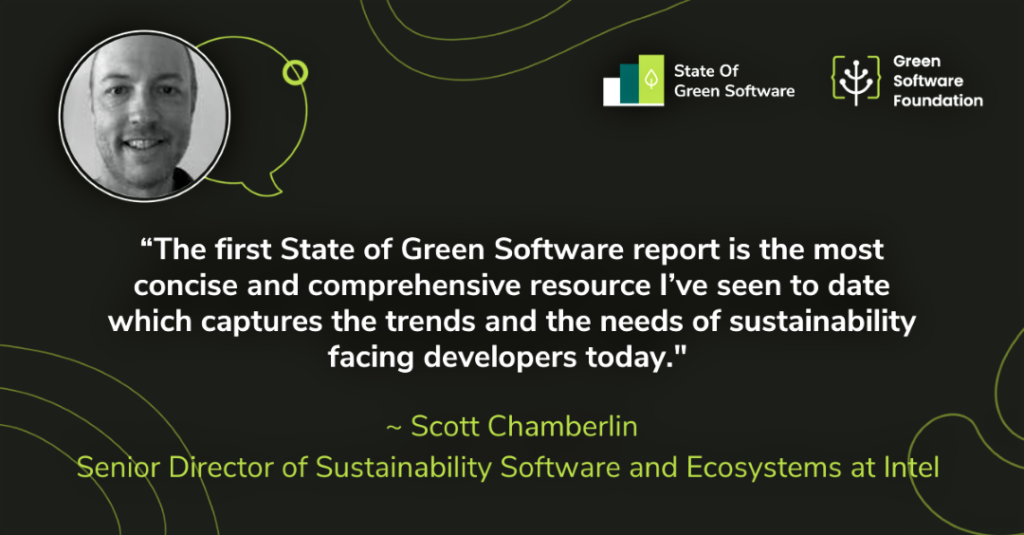Green software report sheds light on carbon-aware operations

World Environment Day (5th June) serves as a reminder that while technology benefits society, it also damages the planet through the consumption of materials and energy from non-renewable sources. Estimates vary, but the Green Software Foundation reports that software-related CO2 emissions account for 4-5% of the global total. And the foundation, which has just launched its first State of Green Software Report, highlights that – without industry action – software emissions could rise to 14% of the world’s carbon footprint by 2040.
Prior to changes in the way that digital currencies reach agreement on updating their ledgers, blockchain technology was often criticized for its high energy consumption – for example, at one point, Bitcoin’s energy demands were estimated to be similar to Switzerland’s. And trackers such as the Cambridge Bitcoin Electricity Consumption Index continue to profile total Bitcoin greenhouse gas emissions.
Today, the widespread use of large language models – which require months to train using power-hungry computers featuring thousands of GPUs – is raising concern over the environmental impact of AI. Writing in Harvard Business Review, Accenture analysts Sanjay Podder, Adam Burden, Shalabh Kumar Singh, and Regina Maruca point out that algorithms become hungrier as developers push for greater accuracy.
Power hungry AI
Training a relatively simple AI model, the Accenture team found that achieving a final 0.08% incremental increase in accuracy took nearly 400% more energy than the first stage of the model-building process. And repositories such as Huggingface, which enables users to retrieve AI model weights for a huge variety of algorithms, encourages developers to report carbon emissions alongside the data that was used for training.
Cloud providers have made big gains in making their facilities more energy efficient. But the challenge comes from the huge growth in demand for services. Microsoft currently operates more than 200 datacenters globally. And, according to Noelle Walsh – Corporate VP, Cloud Operations and Innovation at the US-headquartered firm – Microsoft is on pace to build between 50 and 100 new datacenters each year for the foreseeable future.
Given all of these factors, the question – for the future of the planet and its inhabitants – is what can be done to reduce the environmental cost of technology? And there are certainly constructive measures that can be applied, particularly in the area of software development and operation, as advocated by the Green Software Foundation.
The environmental group notes that developers want to have a positive impact, but various steps need to be put in place to turn that goodwill into positive action. Firstly, measuring the carbon impact of software needs to become commonplace to establish a baseline for improvement. And the appetite for green software training (according to survey data, 55% of software practitioners say they are interested in taking a green software training, but have never taken one) must be fed.
Decarbonizing software at scale
Also, more action needs to happen higher up in organizations. The vast majority of CEO’s recognize that investing in sustainability delivers improved business outcomes, but worryingly that proportion shrinks considerably when it comes to making those ambitions a top priority. And those that are already committed to making changes for the better can always benefit from fresh thinking on evolving topics such as decarbonizing software at scale – one of the 2023 State of Green Software report’s major themes.
“Even as someone leading a team and who has been heavily invested in this area for many years, there is a large amount of new ideas and key insights available here,” said Scott Chamberlin, Senior Director of Sustainability Software and Ecosystems at Intel Corporation and a steering committee member of the Green Software Foundation. “We will be leveraging these findings to improve our work here at Intel and help advance the industry and ultimately lower its environmental impact as quickly as possible.”
And it’s not just about companies driving change internally. End-users need to be considered too. Making it easier for software consumers to see how product features impact energy consumption could make a big difference. Green software development reframes what good software looks like and puts environmental performance firmly on the agenda.
Green software principles that encompass products consuming the least amount of energy possible, running when electricity is clean, and utilizing components that can be repaired, reused, and recycled are often implied across the IT industry. For example, professional bodies such as the Association for Computing Machinery asks that computing professionals should promote environmental sustainability both locally and globally.
But to deliver on those aspirations, ethics statements need to go hand in hand with practical advice, which is where Green Software Practitioner resources fit in. For example, having vendor-specific catalogs of how to engineer environmentally-friendlier applications will translate green principles into products capable of contributing to a reduction in global greenhouse gas emissions.











